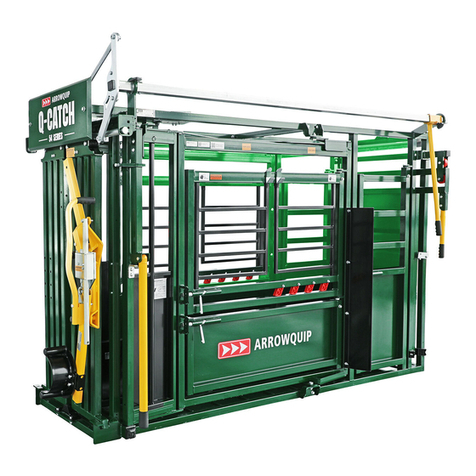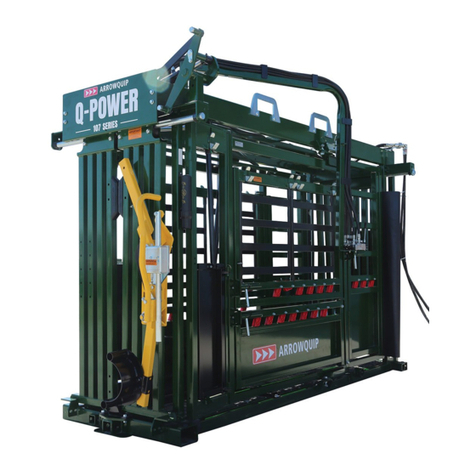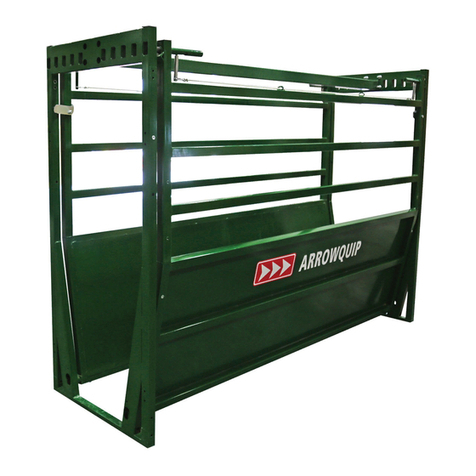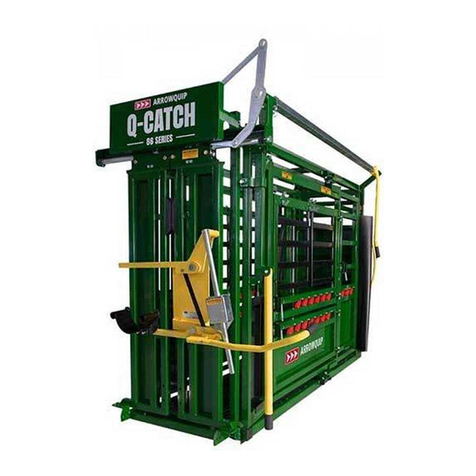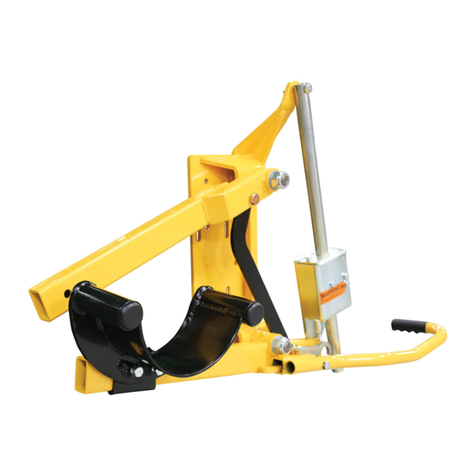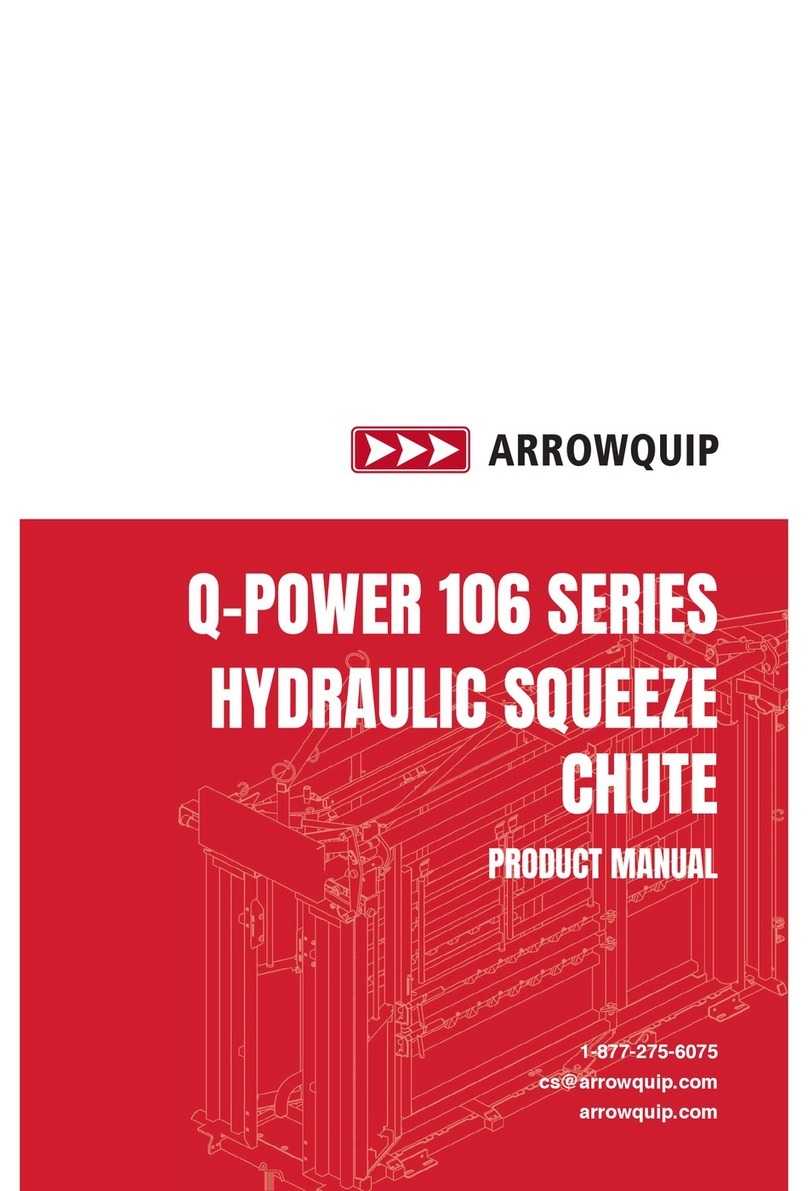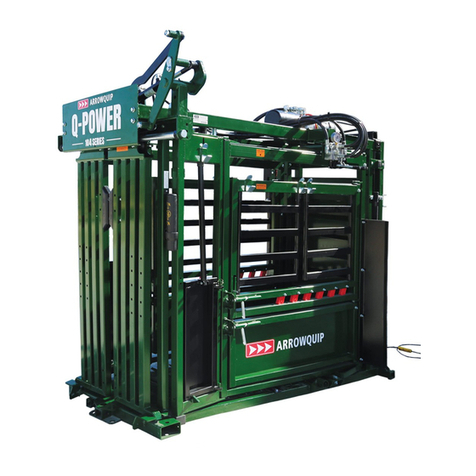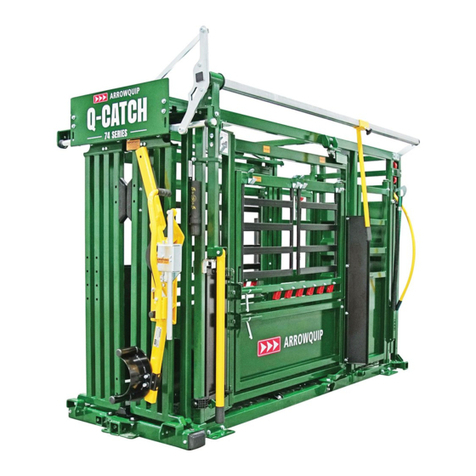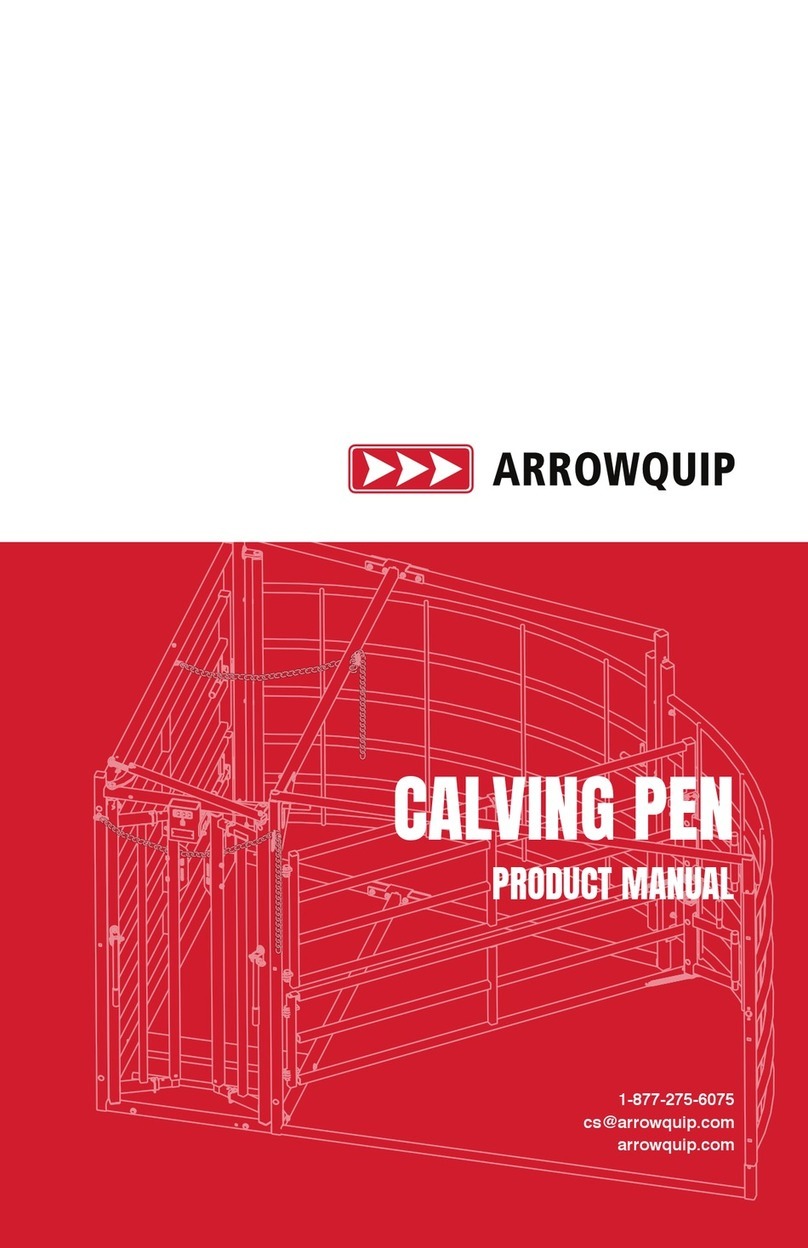
PLEASE FOLLOW ALL SAFETY INSTRUCTIONS PROVIDED IN THIS MANUAL
BEFORE OPERATION. ARROWQUIP DOES NOT ACCEPT RESPONSIBILITY FOR
ANY ACCIDENTS OR INJURY WHEN THIS SAFETY MANUAL HAS NOT BEEN
READ IN FULL AND KEPT WITH THE PRODUCT AT ALL TIMES. OPERATORS
OF THIS PRODUCT TAKE AND ACCEPT RESPONSIBILTY FOR ANY HARM OR
INJURY TO THE ANIMAL OR OPERATOR WHEN IT PERTAINS TO HOW THE
EQUIPMENT IS USED AND MAINTAINED.
Please keep this manual for frequent reference and to pass on to new users or owners.
SAFETY PRECAUTIONS
PLEASE FOLLOW ALL SAFETY PRECAUTIONS OUTLINED HEREIN. ANY
HARM TO THE ANIMAL OR INJURY TO THE OPERATOR WHICH OCCURS DUE
TO HOW THE PRODUCT IS OPERATED, OR RESULTING FROM A LACK OF
SAFETY PRECAUTIONS ARE THE SOLE RESPONSIBILITY OF THE OPERATOR.
All farm machinery and equipment is potentially dangerous. Careless use of any Arrowquip
livestock equipment may cause injury or damage to persons, cattle, or property. Arrowquip
has taken precautions in the design and manufacturing of this product to ensure that it is safe
and user-friendly. Therefore, user must assume all responsibility and risk associated with the
possession and use of the equipment.
WARNING: READ BELOW BEFORE OPERATION.
1. Ensure the operator understands the contents of this manual before using the equipment.
2. Donotwearloose-ttedclothing.
3. Ensuretheequipmentisonarm,level,drysurfacethatisfreeofrocksandothertrip
hazards.
4. Do not enter the vet cage until the animal is secured in the head gate.
5. Do not stand in front of the head gate while operator is moving the cattle through the
squeeze chute.
6. DO NOT ALLOW CHILDREN UNDER THE AGE OF 18 NEAR AN OPERATING MACHINE.
7. Follow safe cattle handling procedures in other areas of the yard so that cattle are more
docile.
8. DonotmakeanymodicationstoArrowquipequipment.Non-factorymodicationstothe
equipment can reduce the safety for the operator and livestock.
1
